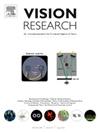皮层对自然表面不愉快的快速反应及其与图像统计的关系
IF 1.4
4区 心理学
Q4 NEUROSCIENCES
引用次数: 0
摘要
人类不仅能感知自然表面的物质特性,还能评估其情感品质,如愉悦或不愉悦。最近的心理物理学研究表明,这种情绪印象可以直接产生于低水平的图像统计,独立于物体识别。为了阐明这些即时情感反应背后的神经机制,我们在参与者观看150张不同情感效价的自然表面图像时记录了视觉诱发电位(vep)。我们发现在刺激开始后100-150毫秒左右出现的枕部VEP成分与主观不愉快评分显著相关。此外,通过与一小组诊断图像统计相关的VEP成分的线性组合,可以准确预测这些与不愉快相关的VEP。我们的研究结果表明,早期视觉皮质活动编码的图像特征会引起不愉快的情感反应,这支持了快速、低水平的视觉处理可以直接促进视觉纹理和材料的情感评价的观点。本文章由计算机程序翻译,如有差异,请以英文原文为准。
Rapid cortical responses to the unpleasantness of natural surfaces and their relationship to image statistics
Humans not only perceive material properties of natural surfaces but also evaluate their affective qualities, such as pleasantness or unpleasantness. Recent psychophysical studies suggest that such emotional impressions can arise directly from low-level image statistics, independent of object recognition. To elucidate the neural mechanisms underlying these immediate affective responses, we recorded visual evoked potentials (VEPs) while participants viewed 150 images of natural surfaces varying in affective valence. We identified occipital VEP components emerging around 100–150 ms after stimulus onset that were significantly correlated with subjective unpleasantness ratings. Moreover, these unpleasantness-related VEPs were accurately predicted by a linear combination of VEP components associated with a small set of diagnostic image statistics. Our findings indicate that early visual cortical activity encodes image features that give rise to unpleasant affective responses, supporting the notion that rapid, low-level visual processing can directly contribute to the emotional evaluation of visual textures and materials.
求助全文
通过发布文献求助,成功后即可免费获取论文全文。
去求助
来源期刊

Vision Research
医学-神经科学
CiteScore
3.70
自引率
16.70%
发文量
111
审稿时长
66 days
期刊介绍:
Vision Research is a journal devoted to the functional aspects of human, vertebrate and invertebrate vision and publishes experimental and observational studies, reviews, and theoretical and computational analyses. Vision Research also publishes clinical studies relevant to normal visual function and basic research relevant to visual dysfunction or its clinical investigation. Functional aspects of vision is interpreted broadly, ranging from molecular and cellular function to perception and behavior. Detailed descriptions are encouraged but enough introductory background should be included for non-specialists. Theoretical and computational papers should give a sense of order to the facts or point to new verifiable observations. Papers dealing with questions in the history of vision science should stress the development of ideas in the field.
 求助内容:
求助内容: 应助结果提醒方式:
应助结果提醒方式:


